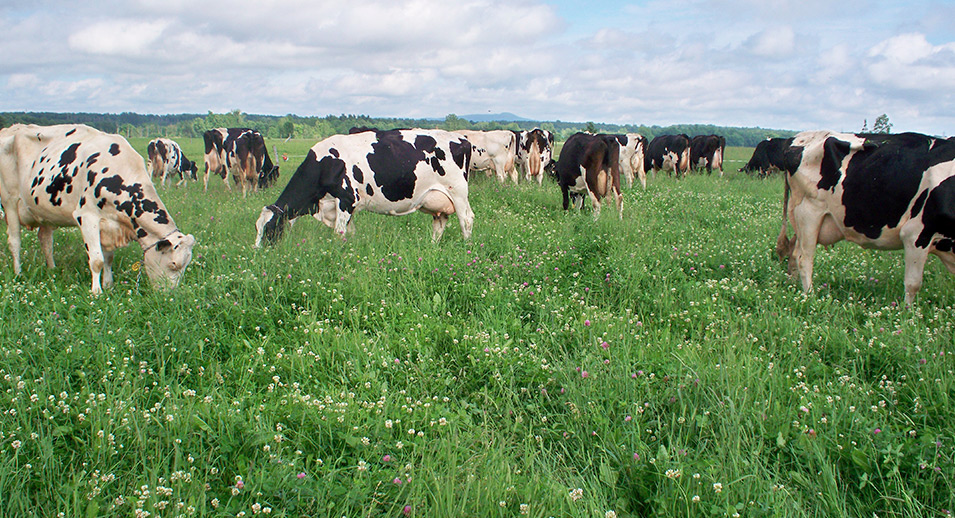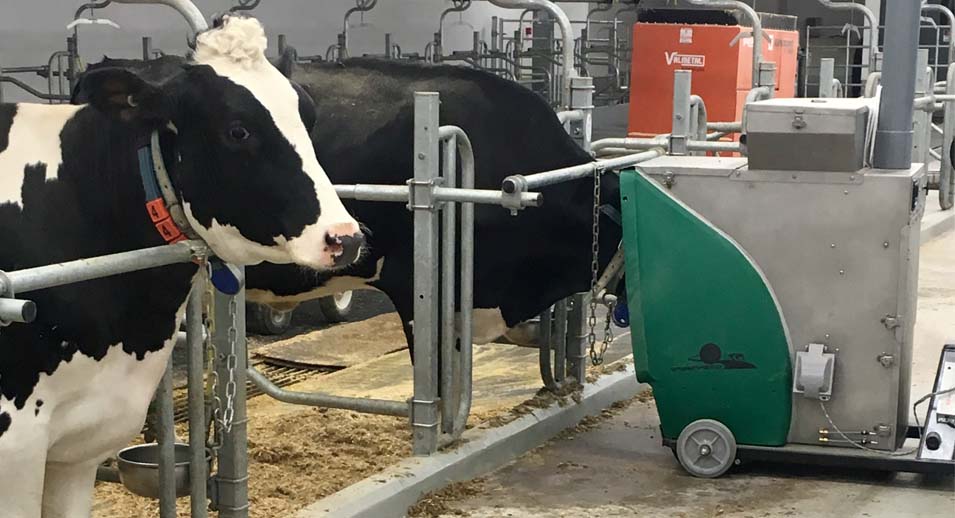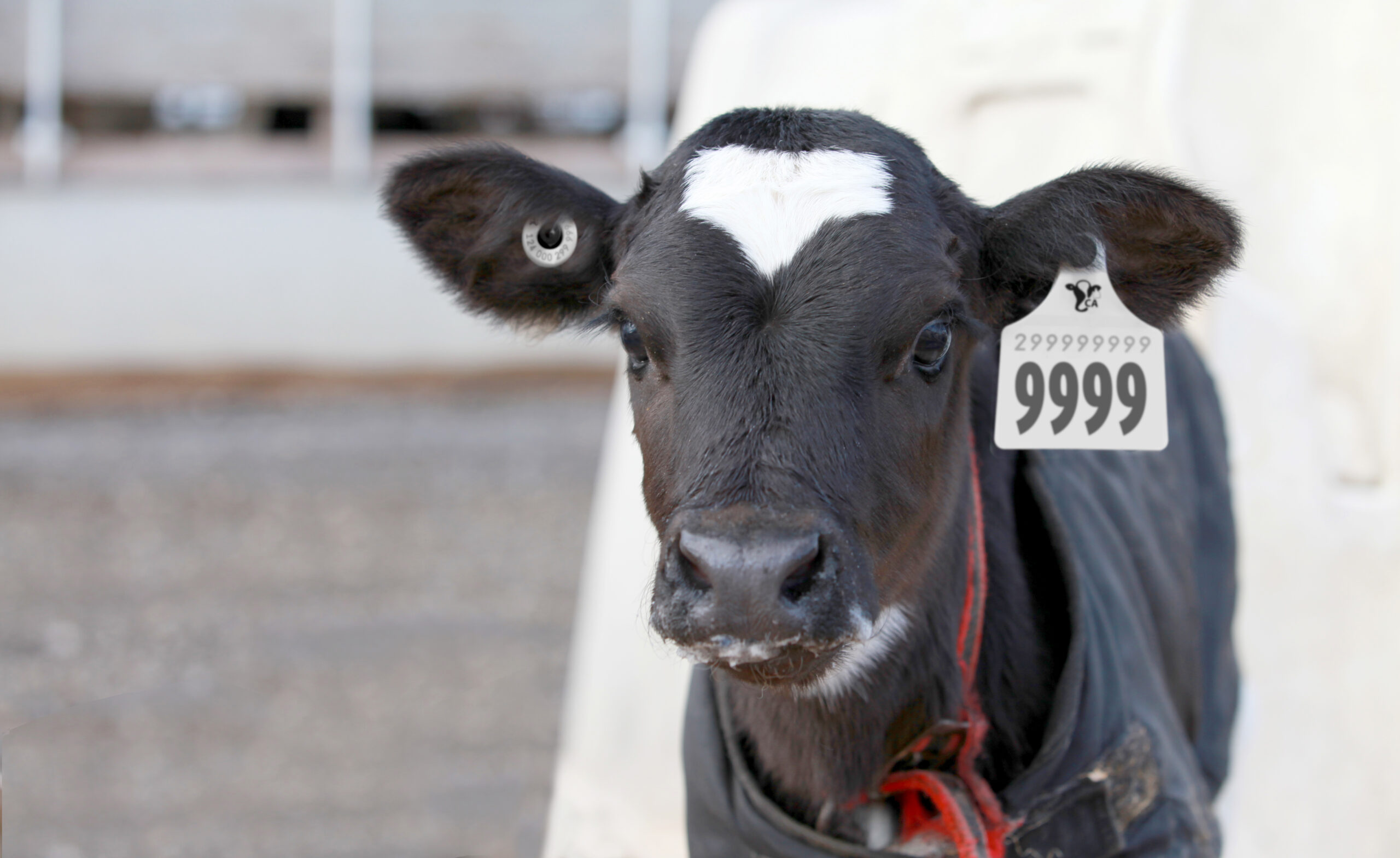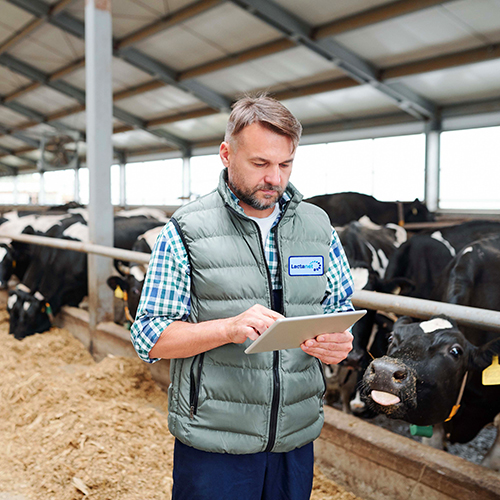Mitigating Dairy Cattle Methane Emissions for a Green Economy
- July 14, 2022
- Le Producteur de Lait Québécois Magazine
It is no secret that greenhouse gas emissions are of increasing concern across the globe. In an effort to reach net-zero emissions by 2050, Canada has set a goal to reduce greenhouse gas emissions by 40-45% below the 2005 levels by 2030. Looking to the agriculture sector specifically, it contributed an estimated 10% to Canada’s total greenhouse gas emissions in 2020. What role do dairy cattle play in these emissions and what mitigation strategies can be implemented?

Some Stats
For dairy cattle specifically, work has already begun to reach a goal of net-zero greenhouse gas emissions from farm-level dairy production by 2050, with the carbon footprint of milk production decreasing by 24% between 1990 and 2019. Greenhouse gases emitted by dairy cattle are nitrous oxide and methane, through manure management. However, methane is also emitted via the digestion process (enteric fermentation) by microbes in the rumen. Dairy cows convert indigestible materials into usable energy and protein for milk production, and any methane produced is considered an energy loss.
From a national perspective, emissions from livestock digestion accounted for 41% of total agricultural emissions in 2019. With a 30 times higher global warming potential than carbon dioxide, mitigating dairy cattle methane emissions is an important target for reducing the carbon footprint of the agriculture sector.
Strategies to Mitigate Methane Emissions with Genetics
Mitigation strategies for reducing methane emissions from dairy cattle can be viewed from both a nutrition and genetic lens. Nutritionally speaking, modifications to dietary compositions and feed additives have been extensively studied and utilized to reduce methane emissions. Additional studies are also underway to develop new dietary strategies.
From a genetic perspective, we can selectively breed cows that emit less methane while still enhancing other economically important traits.
1. Nutrition Strategies
Fermentation patterns in the rumen and the resulting usable energy and methane output are impacted by feed composition and quality. Modifications to dietary compositions have been made to increase milk production while decreasing the amount of feed required and subsequently the amount of methane emitted. Nutritional strategies to reduce enteric methane include increasing forage quality, precision feeding, and increasing starch digestibility. For example, increasing the digestibility of feed reduces the amount of methane produced per unit of feed consumed.
Corn silage is another known mitigation strategy as it contains greater amounts of starch known to improve milk production and therefore reduce methane emission intensity.
Feed additives such as methane inhibitors and those that modify the rumen environment are also promising mitigation strategies. The most promising additives that can reduce methane to varying degrees are 3-nitroxyproponal (3NOP), essential oils, and macroalgaes (Asparagopsis spp.). Work with your nutritionists or advisors to find the best approach to optimize production and reduce methane emissions in your cattle.
2. Genetic Strategies
The impact of genomic selection has been greatly seen across the dairy cattle industry. This includes greater rates of genetic gain for most traits under selection, increased accuracy in genetic evaluations, and the ability to select for novel traits. Compared to nutritional strategies, genetic solutions result in long term progress and therefore tend to be more cost effective over time. The question is, can we use genomic selection to breed for cows that emit less methane?
One way the dairy cattle industry can reduce methane emissions long-term is indirectly through the genetic selection for traits like feed efficiency, fertility, longevity, or health. For example, feed efficiency is the measurement of an animal’s ability to convert feed to milk. If we breed for cows that process feed more efficiently than we can also reduce an animal’s methane output. In fact, Lactanet released feed efficiency evaluations for Holsteins in 2021 and plans are underway to soon include it in the national selection indexes – LPI and Pro$.
Progress from genetic selection is permanent and cumulative, therefore selecting cows that emit less methane is another promising approach to reducing emissions. Several methane emission trait definitions are under study to identify the best for inclusion in selection indexes. Such traits include:
- Methane production, the amount of methane produced (g) per day;
- Methane yield, the amount of methane (g) produced per kg of DMI;
- Methane intensity, the amount of methane produced (g) per kg of milk per day.
On-Going Research
Methane emissions from cattle can, however, be costly and difficult to measure on farm, posing a significant challenge for the incorporation into national breeding programs. In research settings, methane can be measured using a GreenFeed system which measures an animal’s emissions each visit to the feed trough.

Other more cost-effective alternatives that have similar or greater accuracy in methane measurements include using milk mid-infrared (MIR) spectroscopy and emission sniffers in robotic herds. Overall, a high volume of data that is well correlated is crucial for genetic evaluation programs. Research is being conducted collaboratively across the country in an effort to collect methane production data from a large number of animals.
As an example, a Canadian-led international project, the Resilient Dairy Genome Project, is currently underway with the aim of reducing methane emissions and improving feed efficiency using genomics. Preliminary results have shown that breeding animals with reduced methane emissions can result in a decrease in emissions by 11-26%.
Future Outlook
Overall, the future of the dairy cattle industry’s carbon footprint looks promising using nutrition and genetics as methane emission mitigation strategies. As research progresses, genetic evaluations for reduced methane will revolutionize the agriculture sector’s contribution to Quebec’s greenhouse gas emissions.
1As outlined in the “2030 Plan for a Green Economy” framework, Québec has set a goal to reduce greenhouse gas emissions by 37.5% below the 1990 levels. Quebec’s agriculture sector contributed 9.8% to Québec’s total greenhouse gas emissions in 2017.
References
N. Hristov, J. Oh, J. L. Firkins, J. Dijkstra, E. Kebreab, G. Waghorn, H. P. S. Makkar, A. T. Adesogan, W. Yang, C. Lee, P. J. Gerber, B. Henderson, J. M. Tricarico, SPECIAL TOPICS — Mitigation of methane and nitrous oxide emissions from animal operations: I. A review of enteric methane mitigation options, Journal of Animal Science, Volume 91, Issue 11, November 2013, Pages 5045–5069, https://doi.org/10.2527/jas.2013-6583











